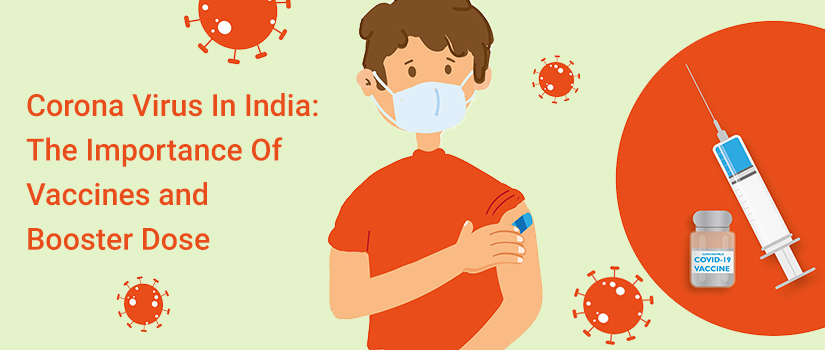
COVID is far from over, however, the number of cases is decreasing globally.
The COVID-causing coronavirus was the first of its kind, emerging in 2019 and sweeping the globe in three large waves of infection with deadly consequences. While the third wave of the COVID has passed, there have been discussions since early March 2022 about the likelihood of a fourth wave of COVID, but no tangible evidence has emerged to support the hypothesis. Although the possibility of another wave is imminent given the virus’s changing nature, the best way to stay prepared is to grasp the signs and symptoms of infection. As it was the first of its type of viral attack in 2020, many were unaware of the symptoms and were influenced mainly by incorrect information. Here are the most common signs of COVID infection seen so far, two years later and after surviving three waves of infection:
The First Wave
The novel coronavirus, which was detected initially in December 2019 in Wuhan, China, lead to the first wave of COVID. Neither the healthcare establishment nor the general public was fully prepared to deal with the virus when it first appeared.
Infected persons had common symptoms such as a cold, fever, headache, weakness, tiredness, and a lack of appetite during the initial wave of the illness. One odd symptom, which is loss of taste and smell, exacerbated people’s worry during this period. Though there is a minor loss in these senses with regular colds, people’s perceptions seemed to diminish totally during COVID. People were unable to taste or smell anything throughout the quarantine period, which lasted around 14 days. This symptom lingered for months, affecting the general health of senior citizens in particular.
The Second Wave
The second wave of the COVID pandemic, considered “the most destructive phase of the pandemic” by health professionals, was headed by the aggressive coronavirus mutant known as the Delta version. This is the first time a mutation has taken control of a pandemic and spread it to millions of people throughout the world. This pandemic began in India and wreaked havoc on the country’s medical and health system. Body soreness, back pain, headache, fever, cough, loss of smell and taste, tingling feeling in fingers and toes, dyspnea, chest pain, weariness, and weakness were some of the prevalent symptoms noticed during this period. One of the strangest discoveries made during this phase of the outbreak was that there were more young individuals infected. In a news conference in mid-April 2021, Delhi Chief Minister Arvind Kejriwal stated that more than 65 % of patients are under the age of 45. The second wave caused chaos in Delhi, Maharashtra, and Karnataka.
The Third Wave
While specialists warned of the development of another mutant known as Omicron in South Africa, people were still reeling from the shock of the second COVID wave and mourning the loss of loved ones. The mutation quickly spread over the rest of the globe. Omicron, the most communicable COVID strain, swept over Delta in a matter of days and infected individuals. The number of hospitalisation cases in the third wave was lower than in the second wave. Sore throat, headache, muscular discomfort, stomach pain, diarrhoea, nausea, fever, cough, and acute weakness were all typical symptoms during this wave.
Present Day: Vaccinations And Booster Jabs
Omicron instances have been on the rise as we entered 2022. The course of two immunisation doses was deemed to be sufficient and successful in the case of the former versions such as Delta and others. Although immunizations have been shown to protect us from having a serious sickness from Covid, we may still come into touch with the pathogen. Even with two injections of the vaccine, the newest, severely altered form is thought to be harming people at a greater rate. As a result of these occurrences, researchers believe that ‘booster doses’ might assist scale up the immunity supplied by the prior two doses, which may have waned over time. This added booster shot will assist to stimulate the immune system, resulting in the production of more antibodies and aiding in the battle against any infections that may have infiltrated the body.
Many of us can question if more than one booster injection is essential to prevent the virus from harming us as several Middle-Eastern countries prepare for their plan to have numerous booster doses. According to a recent Israeli study, even the fourth COVID–19 vaccination could only give moderate and temporary protection against Omicron. Although booster injections have shown to provide some protection against Omicron, it is yet unknown if further booster doses provide increased protection against new variations emerging. Considering this, WHO has stressed the significance of individuals taking their first and second doses as soon as possible because there is substantial evidence that vaccination decreases the risk of serious illness and hospitalization.
Exclusive Omicron Vaccines
Several pharmaceutical firms have said that they want to develop Omicron-specific vaccine doses. The necessity for such an efficient vaccination jab is clear since Omicron instances continue to rise around the world. However, by the time the vaccine is given to people, there may be a reduced need for it. New varieties are predicted to appear within the year, given the current trajectory. Since the virus evolves quickly, the timing, manufacture, and administration of vaccination doses may not always be able to keep up. Omicron cases are currently reducing consistently in India. However, if a vaccine composition update occurs shortly, it will be a useful step not just in reducing the threat of current variations but also in preventing the emergence of fresh ones.
In The Indian Context
Booster doses (also known as precautionary doses) are currently being given to adults over 60 with comorbidity and emergency personnel in India. People with lower immunity are also in danger of acquiring health difficulties as a result of COVID, and they are continually reminded to take all essential steps to reduce their risk of infection. People are often required to follow the COVID-19 standards and precautions that they have been urged to follow from the beginning of the pandemic after receiving booster doses. Masks must be worn, crowded locations avoided, home isolation if symptoms are obvious, and frequent hand washing must all be enforced. The Omicron version cannot be dismissed due to its high transmissibility. Booster injections give protection and increase immunity in the body to a limited amount, hence it’s critical to stick to the COVID guidelines.
The Journey Ahead
As Omicron spreads across the country, with illnesses and deaths increasing by the day, India has stepped in to successfully combat the virus by distributing 150 crore vaccination doses. A vaccination campaign for teenagers aged 15 and above is also doing well. Vaccines for children of lower ages may be available soon. It’s still impossible to estimate how long booster dosages will be active or whether additional types may arise in the future. It’s hard to predict whether we’ll need more booster doses in the future since the virus’s pattern and mutations are too random to be followed.
As the WHO has stated, COVID-19 may be here to stay as the common flu; however, the virus may also cause an endemic, in which the virus spreads among individuals as they adjust to their new lifestyle. If this scenario persists, patients may require booster doses regularly in the future. Until that time comes, we must continue to take every precaution feasible to prevent this viral transfer for our own and others’ safety.



